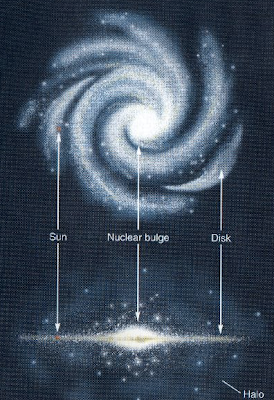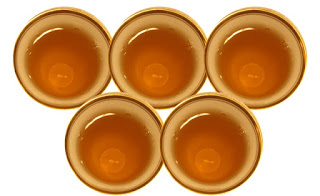Serendipity
led us to Jiu Fen, an old gold mining town at the base of Keelung
Mountain north of Taipei. Our trip began in Tainan, but we quickly
realized our friends were consumed with preparations for the Oolong
Conference the following week. We decided that the best thing to do
might be to leave town. Later that day, a new tea friend invited us
to brewing demonstration in Taipei. I found a name card for an old
teahouse in Jiu Fen that someone had previously recommended to me. I
am not sure precisely where or when this name card came into my possession. But, nonetheless, it was there and the teahouse manager’s
name scribbled on top. I showed the card to a tea friend who said,
“Ah, she is a very friendly person. If you choose to go, be sure
and let me know so that I can contact this person. She will be a good
host.” In this way, our trip north unfolded, one piece at a time.
The
next morning we boarded a bus bound for Taipei, which is actually
quite comfortable and almost as quiet as traveling in Switzerland. A
few hours later,
we pulled into the Taipei bus station, which is now part of a multi
story intricate transportation hub connecting the high speed rail,
local trains, buses, and subway system. This sleek system leaves one
wondering where America has gone wrong with its public transportation
options. As soon as we arrived at the bus station, we took a short
walking tour of the station, including an underground mall that
extends six floors below ground. (In Taipei, space is extremely limited. As a result, one can either go down or up. For an entire
semester, I attended a Mandarin Chinese class on the seventh floor,
underground. This is not recommended for the claustrophobic.)
 |
| Creative food cart in the Creative Park |
We
boarded a local train to take us to the Creative Park. It was here
that we planned to attend a free tea service, fashioned after the tea
events of old. The Creative Park pulsed with activity: families
meandered through outdoor art exhibits and teenagers restlessly
waited in line for a rock concert. The tea tasting, however, proved
to be a very low key affair in a secluded pavillion. We were
introduced to an authentic Dong Ding tea and enjoyed sipping tea with
new friends. The hosts brewed the tea light so that it was sweet;
which makes tea more appealing to a wide audience.


Later,
we ventured to another section of town and enjoyed dumplings and
cucumber salad from one of Taiwan's most famous dumpling houses.
Here, the multi-lingual staff cheerfully hosts guests from all over
the world. At least 15
chefs, all clad in white, bustled about in the steam-filled kitchen
preparing the dumplings. They were soft and light--little pillows
filled with a burst ginger and delicate greens. The
food here is truly outstanding and it’s a shame that I did not get
more pictures to drool over.
As
evening approached, we decided to spend the night in Jiu Fen. Luckily
the manager of the tea shop, Miss Zhang, was able to secure us a room
for the night. This was no small feat, given our late notice and the
fact it was a holiday. We were lucky!
Our
host instructed us to take the bus to Jiu Fen and then call the hotel
owner as soon as we arrived at the local 7-11. This seemed
straightforward, but soon it became obvious that not that many locals
travel to Jiu Fen by bus. After finding the right bus, which was a
small trick, we were off. It was an old bus, bearing little
resemblance to the modern vehicle that carried us swiftly to Taipei
earlier that day. Every time we hit a small bump, the shocks would
screetch and shimmy. It was like riding on an old boxspring
mattress. We bounced through road improvement: Screetch, Screetch,
Screetch. We hit potholes: SCREETCH, SCREETCH, SCREETCH. This went
on for a while at which point I realized that some nostalgic part of me has grown fond of such experiences over the years. We inched slowly out of Taipei, making
stops seemingly every 50 feet. Clearly, this was an incremental
journey, and suddenly it occurred to us that neither one of us knew where we were going or how long it would take.
Finally
at one stop, the driver refused to take any more passengers. “No
more local service,” he said, explaining that we were heading onto
the freeway. After closing the doors and heading up the freeway on
ramp, we were zooming over the nicely paved freeway, and the bus was
quiet, except for the occasional grinding of gears and the roaring
sound of the aged engine working to catapult the bus at a speed that
seemed just a little too fast for this old bus. But this also
somehow felt familiar. Going to this place for the first time, with
only a vague idea of how far it was, it seemed as though I had lost
track of time all together. Although the total travel time was
probably around an hour, since I didn't know when we would reach the
point marking our final destination, it seemed that minutes were
lasting longer, and that time was moving at a slower speed than
normal. But it was dark and soon we began passing through cool little
towns that had a totally different vibe and culture. One of the
great things about Taiwan is that it has maintained a great deal of
regional diversity.
 |
| Jiu Fen's welcoming committee was ever so thoughtful. |
As we
climbed into the mountains for the final ascent the excitement
continued to build. The bus lurched around tight turns creating an
even higher pitch. Climbing the through the curves in the dark, the
view unfolded to epic proportions. Misty hills, far away temples set
ablaze by lighting and soon Katie questioned the existence of a 7-11
in such a setting.
Stay
tuned for Part 2…


















